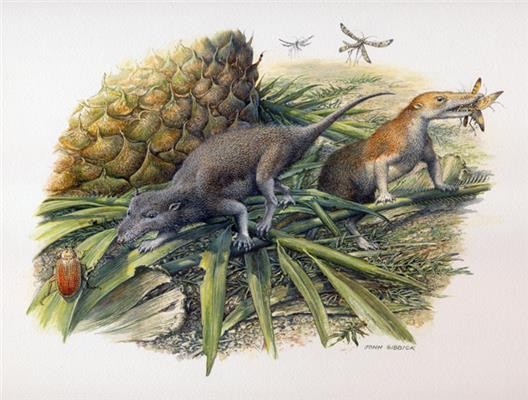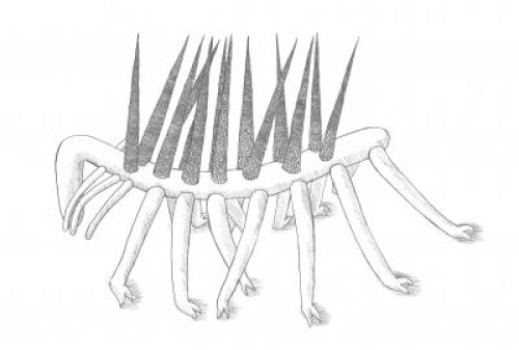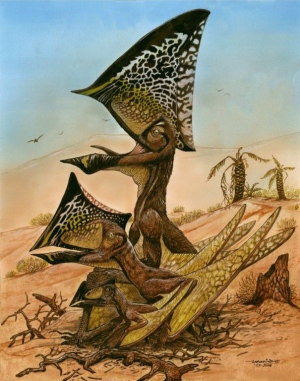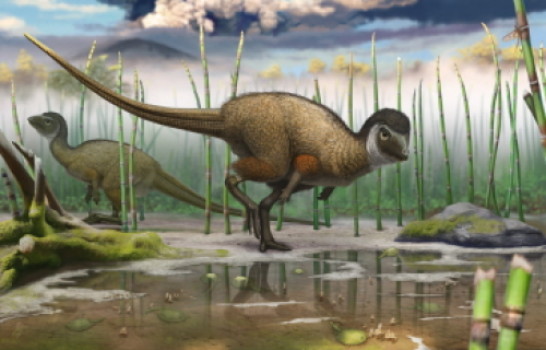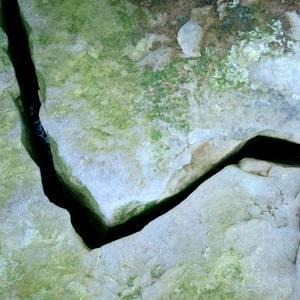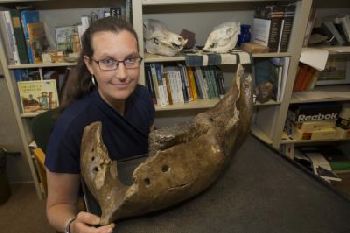New analyses of tiny fossil mammals from Glamorgan, South Wales are shedding light on the function and diets of our earliest ancestors, a team including researchers from the University of Southampton report today in the journal Nature. Mammals and their immediate ancestors from the Jurassic period (201-145 million years ago) developed new characteristics — such as better hearing and teeth capable of precise chewing.
By analysing jaw mechanics and fossil teeth, the team were able to determine that two of the earliest shrew-sized mammals, Morganucodon and Kuehneotherium, were not generalised insectivores but had already evolved specialised diets, feeding on distinct types of insects.
Lead author, Dr Pamela Gill of the University of Bristol, said: “None of the fossils of the earliest mammals have the sort of exceptional preservation that includes stomach contents to infer diet, so instead we used a range of new techniques which we applied to our fossil finds of broken jaws and isolated teeth. Our results confirm that the diversification of mammalian species at the time was linked with differences in diet and ecology.”
The team used synchrotron X-rays and CT scanning to reveal in unprecedented detail the internal anatomy of these tiny jaws, which are only 2cm in length. As the jaws are in many pieces, the scans were ‘stitched together’ to make a complete digital reconstruction. Finite element modelling, the same technique used to design hip joints and bridges, was used to perform a computational analysis of the strength of the jaws. This showed that Kuehneotherium and Morganucodon had very different abilities for catching and chewing prey.
Study co-author, Dr Neil Gostling from the University of Southampton, said: “The improvement in CT scanning, both in the instrumentation, at Light Source at the Paul Scherrer Institute in Switzerland where we scanned or even the µ-VIS Centre at Southampton, along with access for research of this kind, allows us to make inroads into understanding the biology and the ecology of animals long dead. The questions asked of the technology do not produce ‘speculation’, rather the results show a clearly defined answer based on direct comparison to living mammals. This would not be possible without the computational techniques we have used here.”
Using an analysis previously carried out on the teeth of present-day, insect-eating bats, the researchers found that the teeth of Morganucodon and Kuehneotherium had very different patterns of microscopic pits and scratches, known as ‘microwear’. This indicated they were eating different things with Morganucodon favouring harder, crunchier food items such as beetles while Kuehneotherium selected softer foods such as scorpion flies which were common at the time.
Team leader, Professor Emily Rayfield from the University of Bristol, added: “This study is important as it shows for the first time that the features that make us unique as mammals, such as having only one set of replacement teeth and a specialised jaw joint and hearing apparatus, were associated with the very earliest mammals beginning to specialise their teeth and jaws to eat different things.”
Courtesy: University of Southampton. “Jurassic mammals were picky eaters, new study finds.” ScienceDaily. ScienceDaily, 20 August 2014.













 August 21st, 2014
August 21st, 2014  Riffin
Riffin 